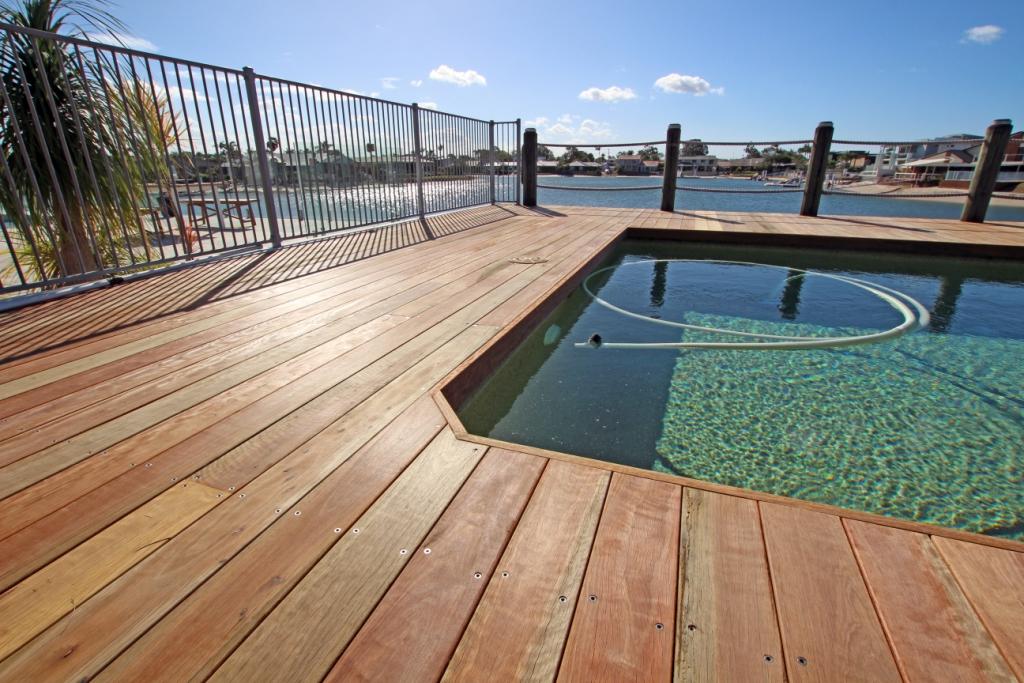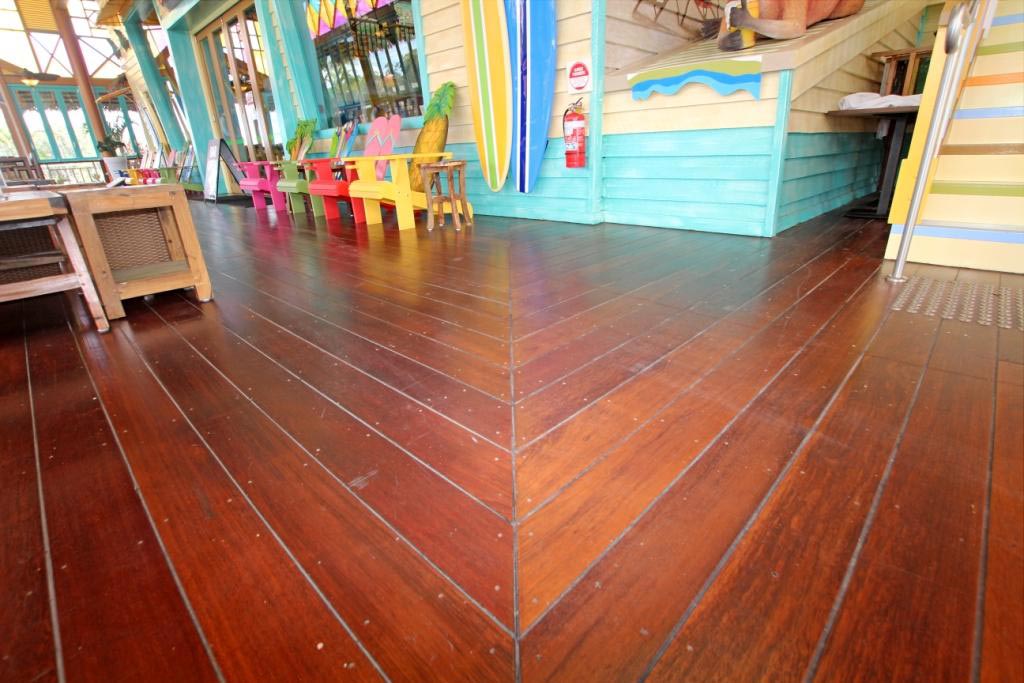Protection of Timber Decking
As the supplier of what are widely regarded as the highest quality decking screws on the market, SPAX understands and promotes the high quality construction of timber decks. Accordingly, I feel it is important to communicate processes in deck construction which will provide the highest standard of quality and enhance the appearance of your deck.
Probably the most common problem we encounter is that of exposure of the timber to the external environment and, in particular, exposure to moisture before, during and after construction of the deck. This exposure will often cause cracking, cupping and, ultimately failure of the timber, which can be very unsightly and shorten the lifespan of the deck.

To prevent this occurrence, SPAX recommends that timber decking material should be protected from moisture before construction of the deck and a protective finish should be applied to all surfaces (including any freshly cut ends) of each decking board before fixing to the joists. Nearly all failures we see are caused by not protecting the timber because clients like the natural weathered look. Unfortunately, the natural silvering that occurs in unprotected timber that is exposed to the elements is the first stage of decay. If you like the silver weathered look, simply get your decking oil stained to the colour of your choice. Please be aware, that dark timber stains can cause the timber to heat up in the sun excessively.
If you supply decking timber, build decks professionally or are about to build your own deck, I highly recommend you read the below extract from Wood Solutions guide 21 “Domestic Timber Deck Design” published by Forest and Wood Products Australia (FWPA).
Section 1.7 Timber Finishes

It is important that a suitable finish be applied and maintained to protect the surface of the timber from weathering and to maintain an attractive appearance. This protective finish of the timber surface will reduce the effects of weathering of any timber (treated or untreated) in an exposed situation. From a durability perspective, the main function of the finish is to slow down the rate at which the timber will take up or lose moisture. By slowing that rate down, the severity of any checking on the surface of the timber is considerably reduced. The finish should contain a fungicide to prevent mould growing on any sugars or starches that may be in the finish.
There are two main types of timber finishes:
• Film-forming finishes, such as paints, clear surface coatings and heavy-bodied stains appear as a layer on the surface of the timber, visually creating a smooth surface and do not penetrate significantly into the surface of the timber.
• Penetrating finishes such as water repellents, decking oils and decking stains penetrate into the surface of the timber and do not form a significant surface film. Due to the wear expected with foot traffic, penetration finishes are better for decking boards than film-forming finishes.
Translucent coatings and stains are typically a combination of film-forming and penetrating coatings with added preservatives, fungicides, and colourants. The degree of film formation and penetration varies with product and manufacturer.
As a minimum, a protective finish should be applied to all surfaces (including any freshly cut ends) of each decking board, preferably before fixing to the joists. A protective finish includes products that penetrate the surface of the timber and products that provide a film or coating to the surface of the timber.
Further information on SPAX decking screws can be found at www.spaxpacific.com or phone our SPAX Pacific office in Australia on (07) 4056 2009 or New Zealand on (09) 5707 447.
Greg Pankhurst
Technical Consultant – SPAX Pacific
References
Domestic Timber Deck Design – Forest and Wood Products Australia.
Share
